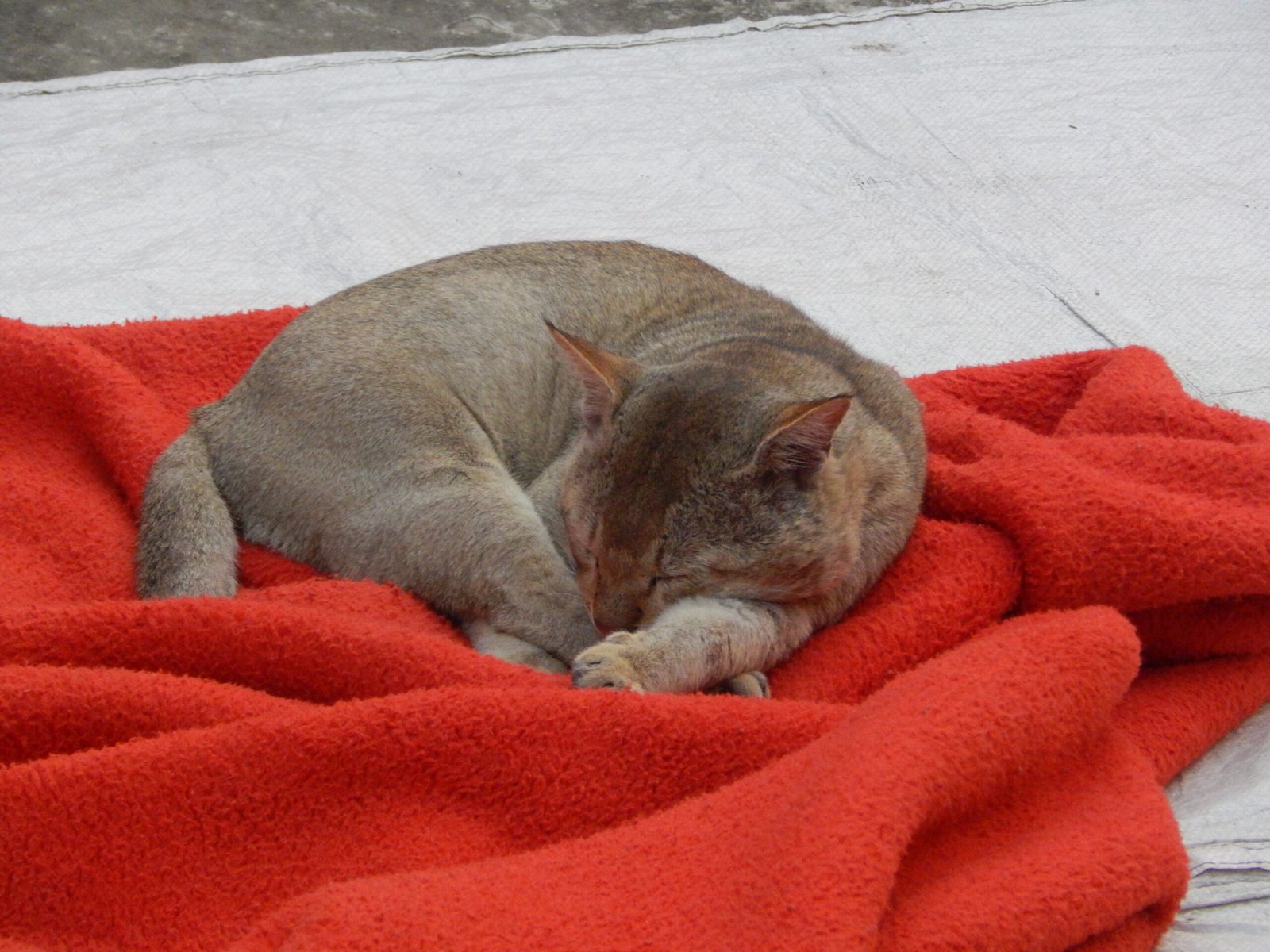What if the softest purr and warmest headbutt from your rescue cat could be yours, not through luck, but through love, patience, and a little wisdom? Anyone who has ever locked eyes with a scared, scruffy cat in a shelter knows that earning a rescue cat’s trust and affection can feel like coaxing a rainbow out on a rainy day. But when that moment comes—when your shy feline finally curls up in your lap—it’s nothing short of magic. The journey to earning deeper affection from a rescue cat is filled with gentle surprises, quiet victories, and the kind of love that changes both your lives forever. Let’s explore how you can turn that cautious, wide-eyed companion into a devoted friend who loves you back with all their heart.
Understanding Your Rescue Cat’s Past

Before you win a rescue cat’s affection, you need to understand where they’ve come from. Many rescue cats have experienced confusion, neglect, or even trauma. They might flinch at sudden movements, or hide from loud noises. Imagine being uprooted from everything familiar—wouldn’t you be on edge too? Patience and empathy are essential here. Try to see the world through your cat’s eyes. Every gentle interaction is a building block for trust. The more you understand your cat’s past, the more you’ll appreciate their unique personality and quirks.
Creating a Safe Space

Safety is the first step to affection. Set up a cozy spot just for your cat, with a soft bed, some toys, and a hiding place like a cardboard box or a covered cat bed. This safe haven gives your cat control over their environment. Avoid forcing your cat out—let them emerge at their own pace. Place food and water nearby so they don’t have to venture far. A safe space is like a security blanket for your rescue cat, helping them feel protected and loved as they adjust to their new home.
Letting Them Set the Pace

Every rescue cat is different, so let them lead the way. Some may approach you within hours, while others may need weeks or even months. Don’t rush cuddles or try to pick them up if they’re not ready. Sit quietly in the room, read a book, or talk softly. This shows your cat you’re not a threat. Letting them set the pace teaches them that you respect their boundaries, laying the groundwork for genuine affection.
Using Calming Body Language

Cats communicate with their bodies, so yours should say, “I’m friendly!” Avoid looming over your cat or making sudden gestures. Try getting down to their level and blinking slowly—this is like the feline equivalent of a smile. Move slowly and keep your hands relaxed. If your cat approaches, extend a finger for them to sniff. Calming body language reassures your rescue cat, helping them feel safe enough to get closer and maybe, just maybe, offer a little head bump.
Speaking Softly and Gently

Your voice is a powerful tool. Loud, harsh tones can frighten a rescue cat, while a soft, gentle voice is soothing. Talk to your cat as you move around the house. You can even sing to them—your cat won’t mind if you’re off-key! Over time, they’ll associate your voice with safety and comfort. When a cat starts responding to your voice with a purr or a tail flick, you’ll know you’re making progress.
Offering High-Value Treats

Food is the universal language of love for many cats. Offer tasty, irresistible treats to create positive associations with your presence. Start by placing treats nearby while you sit quietly. Gradually, encourage your cat to take a treat from your hand. Use treats sparingly to avoid overfeeding, but don’t underestimate their power. High-value treats are like peace offerings, breaking down barriers and building trust—one crunchy bite at a time.
Engaging in Playtime

Play is more than fun—it’s a way to bond. Use interactive toys like feather wands, laser pointers, or balls to engage your rescue cat. Play mimics hunting, which is instinctive and comforting for cats. Let your cat “win” by catching the toy sometimes. This builds confidence and shows you’re a reliable playmate. Playtime isn’t just about burning energy—it’s about laughter, connection, and sometimes, a few hilarious leaps you’ll never forget.
Respecting Their Boundaries

Nothing pushes a cat away faster than ignoring their boundaries. If your rescue cat hisses, hides, or swats, take a step back. These signs mean they’re overwhelmed or scared. Respect their signals, and try again later. Over time, your patience will show your cat that you’re trustworthy. Remember, affection earned is sweeter than affection demanded. Boundaries aren’t walls—they’re doorways to deeper trust.
Building Routines and Predictability

Cats thrive on routine. Feed them at the same times each day, clean the litter box regularly, and maintain a consistent schedule. Predictability makes the world feel less scary for a rescue cat. When your cat knows what to expect, they relax and open up. Over time, you’ll notice them waiting for you at mealtimes or seeking you out for their nightly snuggle. A simple, steady routine can be the key to unlocking deep affection.
Providing Gentle Touch and Petting

Touch can be healing, but only when your cat is ready. Start by letting your cat sniff your hand. Once they’re comfortable, try gentle strokes along the cheeks, chin, or behind the ears—favorite spots for many cats. Watch for signs of enjoyment, like purring or kneading. If your cat pulls away, respect their wishes. With time, those first tentative pets can turn into long, lazy cuddle sessions that melt your worries away.
Encouraging Positive Associations With You

Every interaction should feel like a good thing to your cat. Pair your presence with pleasant experiences: treats, play, soft words, or grooming. If your cat comes near, reward them with a treat or a gentle scratch. Over time, your cat will associate you with happiness and safety. Positive associations lay the groundwork for a deep, lasting bond that’s built on trust, not fear.
Learning to Read Cat Body Language

Understanding your rescue cat’s body language is like learning a secret code. Look for signs of relaxation—half-closed eyes, slow blinks, a softly swishing tail. On the flip side, flattened ears, hissing, or a puffed-up tail mean “back off.” Learning these signals lets you respond appropriately, deepening your connection. The more you “speak cat,” the more affection you’ll earn.
Introducing New Experiences Slowly

New sights, sounds, or people can be overwhelming for a rescue cat. Introduce changes gradually—a new scratching post, a different room, or a friendly visitor. Let your cat investigate at their own pace. Celebrate their bravery with treats or gentle praise. Slow introductions help your cat build confidence, showing them the world isn’t as scary as they feared.
Using Scent for Comfort and Familiarity

Cats experience the world through scent. Place a piece of your clothing near their bed to help them get used to your smell. You can also use soft cloths to gently rub their cheeks and then place these around the house. Scent helps your rescue cat feel secure and connected to you, even when you’re not in the room. Over time, your scent becomes synonymous with comfort and affection.
Grooming as a Bonding Activity

Some cats love being brushed, others not so much. Start slowly, offering treats and letting your cat sniff the brush. Gentle grooming mimics the social grooming cats do with each other. This ritual can be deeply soothing, strengthening your bond. Plus, it keeps their coat healthy and shiny—a win-win! The first time your rescue cat leans into the brush, you’ll know you’re becoming family.
Patience: The Greatest Gift

Patience is the secret ingredient in every successful cat-human relationship. Some days will feel slow, with setbacks or moments of doubt. But each small victory—a head rub, a gentle purr, or a nap on your lap—makes the journey worthwhile. Patience shows your rescue cat that love doesn’t come with strings or deadlines. In the end, the affection you earn is richer for the wait.
Celebrating Small Victories

Every step forward deserves celebration. Did your cat finally play with a toy? Did they nap nearby or rub against your leg? These moments are proof that trust is growing. Mark these milestones with gentle praise, a treat, or a happy dance—whatever feels right! Cherishing the little things reminds you how far you’ve come together and makes the bond even stronger.
When to Seek Help From a Professional

Sometimes, rescue cats need extra support. If your cat shows signs of severe anxiety, aggression, or withdrawal, it’s okay to reach out for help. Animal behaviorists and veterinarians can offer guidance tailored to your cat’s needs. Seeking help is a sign of love, not failure. A professional’s advice can make all the difference, paving the way for deeper affection and understanding between you and your rescue cat.

Growing up traveling and experiencing new cultures and wonders, I have had a passion for nature, adventuring, photography, and videography. I am currently working towards a BSc in Biodiversity and Ecology at Stellenbosch University, and I hope to specialise in Marine Sciences one day.
Please send any feedback to Feedback@animalsaroundtheglobe.com






